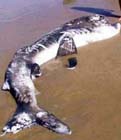Fabled absinthe all a hoax, German scientists say
 Karlsruhe, Germany - Absinthe, the green liqueur flavoured with aniseed which reputedly used to drive artists mad, was a hoax, a team of scientists said Tuesday, adding that it was only the strong alcohol in the drink that was damaging to health.
Karlsruhe, Germany - Absinthe, the green liqueur flavoured with aniseed which reputedly used to drive artists mad, was a hoax, a team of scientists said Tuesday, adding that it was only the strong alcohol in the drink that was damaging to health.
Absinthe was banned in Europe for much of the 20th century because of fears it contained large amounts of thujon, which is toxic to the nerves. Not so, said scientists at the CVUA laboratory in Karlsruhe, Germany, who did the study with US and British colleagues.
They tested old bottles of the beverage nearly 100 years old.
"Its psycho-active effect is just a fairy tale," said scientist Dirk Lachenmeier. The liqueur had contained only minimal thujon.
Users claimed the wormwood liqueur could trigger hallucinations or epileptic fits. The Dutch painter Vincent van Gogh is supposed to have cut off his own ear under its influence.
France banned absinthe in 1915 and Germany did likewise in 1923.
The liqueur came back on sale in 1998 under EU rules saying it may have no more than 35 milligrams of thujon per litre.
The scientists said in the Journal of Agricultural and Food Chemistry that the thujon level in 13 century-old bottles they opened had averaged only 25.4 milligrams per litre.
Nips of absinthe are popular in fashionable cocktail bars in Germany. (dpa)